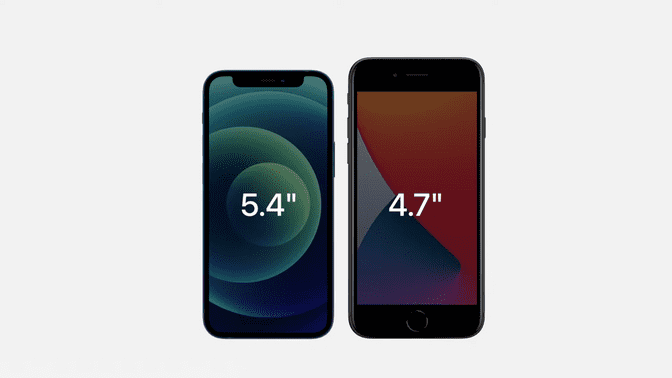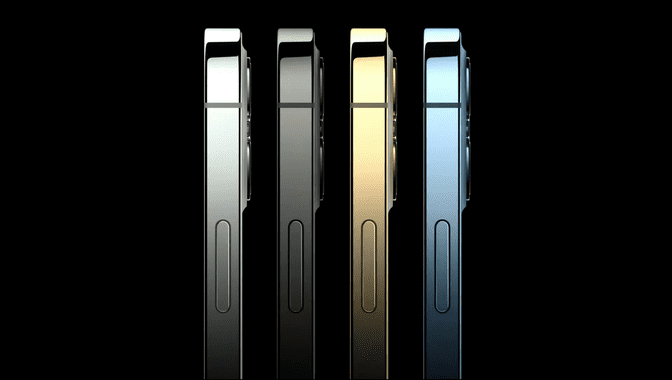whatbrentsay
10/15
The second Apple event in two months was the one most were waiting for. Coming a month later than usual, Apple revealed its new lineup of iPhone and iPhone Pro devices, along with the much rumored HomePod Mini.
The Announcements
HomePod Mini
 Much rumored and a necessary shot in the arm for Apple's HomePod lineup. While this product is several years late to the party, it will give those in the ecosystem a (hopefully) high quality speaker and another entry point to Siri and other in-ecosystem iOS functionality.
Much rumored and a necessary shot in the arm for Apple's HomePod lineup. While this product is several years late to the party, it will give those in the ecosystem a (hopefully) high quality speaker and another entry point to Siri and other in-ecosystem iOS functionality.
Smart speakers of this size are expected to be less capable audio devices but Apple is promising "big sound" from clever hardware design and software integration. The HomePod Mini features an S5 chip (from the Apple Watch Series 5) to enable "Computational Audio." I don't know whether this marketing term will deliver but it's another great example of the mileage Apple gets from reusing their custom silicon.
In terms of capabilities, it looks to offer a comparable feature set to the Google Home Minis and Echo Dots out there. If you've wanted one of those devices but havne't purchased one because it doesn't integrate with your iOS devices, then this looks like it's going to deliver.
iPhone 12
 All hail the iPhone 4's timeless industrial design; I'm thrilled to see it come back. Guess what else is back? The notch! It was too hopeful to assume the entire True Depth camera array could be cleverly hidden—either in the top bezel or underneath the screen itself—to eliminate the notch, but some revision here would have been nice.
All hail the iPhone 4's timeless industrial design; I'm thrilled to see it come back. Guess what else is back? The notch! It was too hopeful to assume the entire True Depth camera array could be cleverly hidden—either in the top bezel or underneath the screen itself—to eliminate the notch, but some revision here would have been nice.
Gripes aside, the floor has been raised on the entry level iPhone. The changes to the design allow for a thinner, smaller, and lighter phone; Apple absolutely loves to make their devices thinner and lighter. OLED screens have trickled down, which means deeper blacks and contrast compared to last year's LCD screen. This Super Retina XDR screen offers 2x the pixels of last year's phone, so clarity will also be much better. The screen, itself, will be more durable (4x, supposedly) and the device more water resistant overall. Additionally, Night Mode comes to all cameras, which is objectively great. Those cameras can also record 4K HDR Dolby Vision video (30fps), which is a lot of buzzwords but simply means video quality will be excellent. The A14 Bionic chip is silly fast and ensures these devices will remain useful for many years after launch. The MagSafe brand returns and comes to iPhone for the first time, opening up a new landscape for accessories. And, of course, there's 5G support. While 5G may not wow customers immediately—its still picking up steam—it gives the device even more longevity.
Overall, the value of the 12 is quite good.
iPhone 12 Mini
 Many customers have been asking for a smaller but not lesser iPhone. Apple finally introduced it this year as phones sizes steadily trend upwards, including this year's Pro phones. This thing is tiny. It's the smallest iPhone Apple offers at the moment—smaller than the SE—and the only sacrifice customers are making are battery size. Additionally, the device is $100 cheaper than the 12.
Many customers have been asking for a smaller but not lesser iPhone. Apple finally introduced it this year as phones sizes steadily trend upwards, including this year's Pro phones. This thing is tiny. It's the smallest iPhone Apple offers at the moment—smaller than the SE—and the only sacrifice customers are making are battery size. Additionally, the device is $100 cheaper than the 12.
I expect this device will be attractive to customers who have iPads or other, larger screened, devices they can use for longer, deeper tasks.
iPhone 12 Pro
 On top of everything the base 12 model offers, the Pro devices offer larger screens over last year's Pro devices and a stainless steel frame vs the standard aluminum. The addition of LiDAR allows for depth mapping which will enhance AR capabilities, improve camera autofocus, and allows for Night Mode Portrait shots to be taken. In addition, the upgraded camera system allows the Wide angle lens to capture more light. The optical image stabilization system is improved on that lens, as well, which will help counter shaky hands for photo and video capture. A third, telephoto lens allows for optical zoom. Dolby Vision capture is bumped to 60fps vs the 30fps of the non-Pro devices. And at some point in the near future, the Pro devices will be able to capture images in Apple's new ProRAW format.
On top of everything the base 12 model offers, the Pro devices offer larger screens over last year's Pro devices and a stainless steel frame vs the standard aluminum. The addition of LiDAR allows for depth mapping which will enhance AR capabilities, improve camera autofocus, and allows for Night Mode Portrait shots to be taken. In addition, the upgraded camera system allows the Wide angle lens to capture more light. The optical image stabilization system is improved on that lens, as well, which will help counter shaky hands for photo and video capture. A third, telephoto lens allows for optical zoom. Dolby Vision capture is bumped to 60fps vs the 30fps of the non-Pro devices. And at some point in the near future, the Pro devices will be able to capture images in Apple's new ProRAW format.
iPhone 12 Pro Max
 Aside from the obvious larger display and battery, the Pro Max sees some notable camera updates over the smaller Pro phone. With physically larger pixels and a sensor-based OIS system, the Wide angle lens will be better at capturing low light photos over the 12 Pro. The telephoto lens also sees some differences with a longer focal length and larger aperture, offering a 2.5x max optical zoom rather than 2x. The Ultra wide is the same on both devices, however.
Aside from the obvious larger display and battery, the Pro Max sees some notable camera updates over the smaller Pro phone. With physically larger pixels and a sensor-based OIS system, the Wide angle lens will be better at capturing low light photos over the 12 Pro. The telephoto lens also sees some differences with a longer focal length and larger aperture, offering a 2.5x max optical zoom rather than 2x. The Ultra wide is the same on both devices, however.
Hot takes
The Pro Max is the "best" 2020 iPhone
I dislike that Apple broke parity between the Pro Max and the Pro by giving the former a better camera package. It muddies the waters for customers and makes it so that getting the best phone means buying the biggest phone. Apple's done it before, debuting the first dual camera set up on the iPhone 7 Plus while leaving the standard 7 with a single camera. I get it; it's a bigger device with more internal space for hardware. They're maximizing that space and providing additional value to customers because of it. I still don't like it. For actual professionals, however, this will be less of a big deal. For amateurs and hobbyists who want an all in one device it makes the choice harder and less clear.
Apple wants you to be excited about 5G
Apple gave 5G a 10min block of time at the top of the iPhone 12 segment, more than half of it given to Verizon's Chairman and CEO. Later, they spent another 3 or 4 minutes talking about the specific hardware and software the iPhone uses to offer 5G. For comparison, the A14 Bionic chip—the first 5nm processor in a smartphone ever—only got 2min in the spotlight and its a kind of a technological marvel. Nods to 5G were sprinkled through other sections, like calling out faster downloads and lower latency for gaming. Users may not be as bullish on 5G yet but Apple is clearly communicating how important it is to them and the iPhone moving forward.
Portless iPhones are coming at some point in the not distant future and I can't help but see 5G as part of the story used to assuage the Lightning port's removal. I'm hoping Apple also provides a high-bandwidth, direct device-to-device wireless solution when they make that change but that's a reach at the moment.
U1 again, but what for?
The proximity aware feature(s) of the HomePod Mini give us another glimpse of what wants to offer us with this technology. They are aggressively embedding the U1 chip in all of their new devices and by mid 2022 it might be in everything they sell. What we've been shown so far is not going to send people to the store but it reveals a little more of Apple's hand.
We still haven't seen the true value of an ecosystem of hardware that all know where they are in relation to one another. For now, the U1 chip remains a bit of a sleeper technology, waiting to be fully unlocked when Apple's master plan is ready to execute. What is it? No one knows yet, but I suspect AR is a part of it. Knowing where devices are in relation to one another with high precision would allow for interfaces to convincingly be painted on or near that hardware. If you have AR glasses on your face that sports a LiDAR sensor but having looked behind you, its UI would still be able to alert you that something useful is in that blind spot. Perhaps a contrived example but U1 won't be standout on its own; it's part of a bigger puzzle that we don't have all the pieces for yet.
LiDAR isn't at maximum potential
Similar to U1, the LiDAR sensor seems to be waiting on something to reach its full potential in the mainstream. Niche applications seem to be increasing and more games are popping up that leverage the already very good capabilities provided by ARKit. The kind of occlusion LiDAR enables for AR experiences is very impressive. That, too, seems important if you have an AR capable, LiDAR equipped device on your face.
It's a slower march for LiDAR but I expect to see this in all of Apple's iOS-using hardware at some point. Apple has put a lot of time, energy, and money into building of the foundation of its AR software solutions. The hardware is where they will deliver on that.